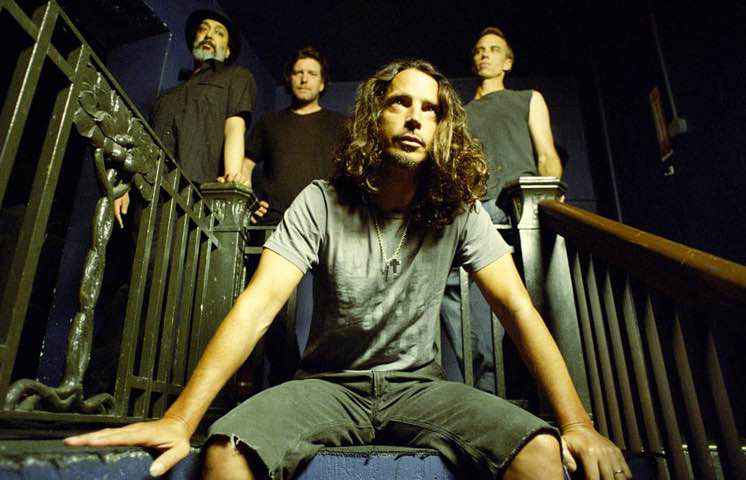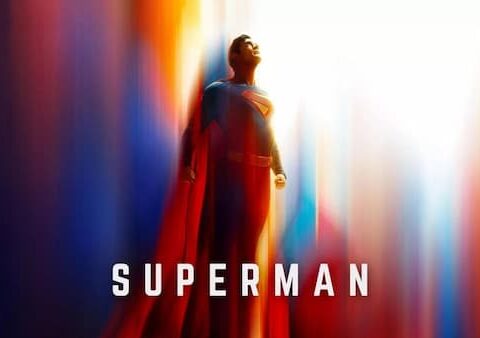I love PJ Harvey. I’ve always loved PJ Harvey.
Ever since, as a young, disheveled teen, I first saw her emerge as a potent, edgy singer/songwriter and purveyor of the most disarming, stripped down alternative music in the early nineties.
In all of the time since then, she has never ceased to be an artist (in the truest sense of that word) of the very highest caliber, releasing extraordinary and evolving (and often very different) albums and carving out a place in the musical and artistic landscape that is all her own.
She has no equal. I would go as far as to assert that Polly Jean Harvey is the greatest British musical artist of my lifetime and probably the finest singer/songwriter of the last few decades. Dry (1992) and Rid of Me (1993) remain two of my favorite albums by any recording artist; but there hasn’t been a PJ Harvey album that hasn’t been special in some way or another (maybe White Chalk comes closest to being pedestrian, but that has some gems on it too), and 2011’s Let England Shake was an absolute masterwork.
So if you’re PJ Harvey, I imagine the prospect of putting together a new album is entirely free from any extraneous need to ‘prove’ anything to anyone. That said, she might’ve been a little surprised at some of the negative reaction her latest offering has received from some critics.
The Hope Six Demolition Project, her ninth studio album, was released on 15th April on Island Records.
A follow-up to her highly acclaimed and immensely brilliant Mercury Prize-winning album Let England Shake (2011) would seem like a difficult proposition; but this album doesn’t come across like anything so contrived as a ‘follow-up’ record; and Polly Jean Harvey is by now so accomplished a purveyor of the art, and with such a rich discography, that it probably doesn’t even enter her mind to think in those terms.
With Let England Shake, she had been studying contemporary accounts of both of soldiers and civilians involved in the wars in Iraq and Afghanistan, while simultaneously reading through equivalent accounts from the Gallipoli Campaign in World War I. In her own, slightly magical way, she was marrying the past to the present and blurring the conventional distinctions between the romanticised conflicts of the past and the ugly wars of the present.
Touching on themes ranging from gentrification to the refugee crisis, The Hope Six Demolition Project is unsurprisingly also rich in evocative imagery and impressionism.
This album comes with a preceding mythology of sorts already surrounding it.
Harvey wrote the songs, along with her poetry book The Hollow of the Hand, while visiting Afghanistan, Kosovo and Washington D.C, with filmmaker and photographer Seamus Murphy (between 2011 and 2014). And the album was recorded in sessions that were made open to the public as part of an ‘art installation’ at London’s Somerset House (it was called Recording in Progress), concluding on February 14th last year. Visitors were able to watch Harvey and her producers via one-way glass (on account of her self-consciousness).
The album’s title is a reference to the ‘HOPE VI’ projects in America, “where run-down public housing in areas with high crime rates has been demolished to make room for better housing”; though this has apparently had the side effect that a number of former residents found themselves no longer able to live in the areas, leading some to regard it as “social cleansing”.
The HOPE VI program is directly touched on in the opening track (and second single) ‘The Community of Hope’, which has provoked criticism directly from politicians running for the council seat in Ward 7 in Washington, D.C. Former DC Mayor Vincent C. Gray is reported to have said, “I will not dignify this inane composition with a response,” while his campaign treasurer came out with the particularly insulting comment that “PJ Harvey is to music what Piers Morgan is to cable news.”
It has also drawn harsh criticism from some music reviewers, particularly at established sites or publications, who mostly critique her perceived lack of knowledge or nuance concerning the community she is exploring. In the “Acknowledgements” section of the book she thanks The Washington Post reporter Paul Schwartzman, who it is assumed was her primary filter of perspective. Schwartzman described his experience in this article, writing “I gave a famous rock star a windshield tour of D.C — and didn’t know who she was”.
Several critics attack Harvey for the way she approaches complex social or political issues on this record, calling it vague or overly simplistic: but Harvey isn’t a journalist. She is an artist. And art or music isn’t meant to be precise, empirical, or to offer solutions; it is always more impressionistic than semantic.
And Polly’s songs have always been more about poetry and impressionism than precision.
And besides that, no artist owes it to their audience to be either politically correct or factually pedantic, nor to have a manifesto.
‘Community of Hope’, irrespective of the politics or whether you approve or disapprove of it, is a terrific composition in musical terms. The basic song – a folksy, catchy sing-along – cleverly strips down halfway through to just Polly’s vocal and then morphs into a gospel-style choir before shifting back into the full band. It is a really clever, winning production effect, because it is unexpected but it also doesn’t linger or try to milk it, and instead is just a brief, slightly magical, transmutation in the middle of the track and fits both the tone and the tune beautifully.
This album is very different to Let England Shake; it is less epic feeling and seems more low-key; but – on first listen – is no less engaging.
There aren’t the same multi layers of resonating guitars and ghostly softness; instead there’s more guitar distortion, more prominent drums, and generally more snappy, direct song structures. Harvey, as always, still possesses that unnerving ability to be evocative; unfailingly a musical equivalent of a cutting-edge photo-journalist or war correspondent.
But it isn’t so much social commentary as it is observation: people often make the mistake of analysing her works as if they’re ‘opinion pieces’, when they’re really not. A lot of this album can be misread that way: seemingly by particularly obtuse reviewers.
‘The Wheel’ is evocative and paints a lyrical picture of happy children in a Kosovan village and on a fairground ride, adjacent to a building bearing images of other children killed in an ethnic cleansing. A hand-clapping, bluesy number, it is a standout track on early listens and sits among some of Harvey’s most blatantly catchy songs. ‘The Ministry of Defence’ starts out describing a derelict, vandalised building in Afghanistan, scarred with graffiti and used as a toilet, littered with “drinks cans, magazines, broken glass” and drug paraphernalia; but the picture turns and then, amid the squalor, there is “a white jawbone… human hair”.
The marching song ‘Medicinals’ seems to relate to Native American suffering and oppression, while ‘A Line in the Sand’ might be one of the album’s most striking moments, thematically speaking, seeming to visit an aid worker’s experience in a refugee camp. It is, like most of the lyrics, vague, but veers towards unsettling; and like most of PJ Harvey’s best work, it makes you think.
‘Medicinals’, come to think of it, is probably my favorite song on the album and sounds most like it could’ve been on Let England Shake; and the way she goes into a quieter, beautifully sung part after the last chorus is both gorgeous and a touch frustrating, in that a lot of other artists would’ve expanded on that further and made more of it.
But PJ Harvey just does a couple of bars of it and then lets the song end: she probably, as mentioned earlier, just doesn’t have anything to prove.
Mostly the rest of the album doesn’t grab me the way ‘Community of Hope’, ‘The Wheel’ and ‘Medicinals’ do; and on early listens, this perhaps doesn’t seem like one of PJ Harvey’s overall better releases. However, some of this material probably needs more time to grow – which it probably will.
The Hope Demolition Six Project is – particularly when taken with its related material – probably most striking as a work of art than it is a musical opus.





Polly is awesome. I am currently writing an article about my favourite female artists over the last 30 years or so. Trying to narrow it down to 10 or 12. I dare say she might make it, but I am not sure. It too hard to decide. Maybe an honourable mention?
How could Polly not make your list, man?
I will read your list with interest though. Would Tori Amos get a look in? Or Bjork?
My favourite female artists are not necessarily the ‘best’ artists of all time. I will rank them in terms of how they inspired and influenced me. Although Amos and Bjork would make any ‘best female artist list of all time’, I didn’t listen to them enough or buy their records, so they won’t qualify for my list (despite the fact that they are awesome). Still awhile away, but should be fun.
Will be an interesting list.
You are SUCH a good writer! (Does PJ read your stuff??)
Thanks so much JB, that’s very kind. I doubt Polly reads my stuff – but I’d be happy to fantasise that she does so anonymously!